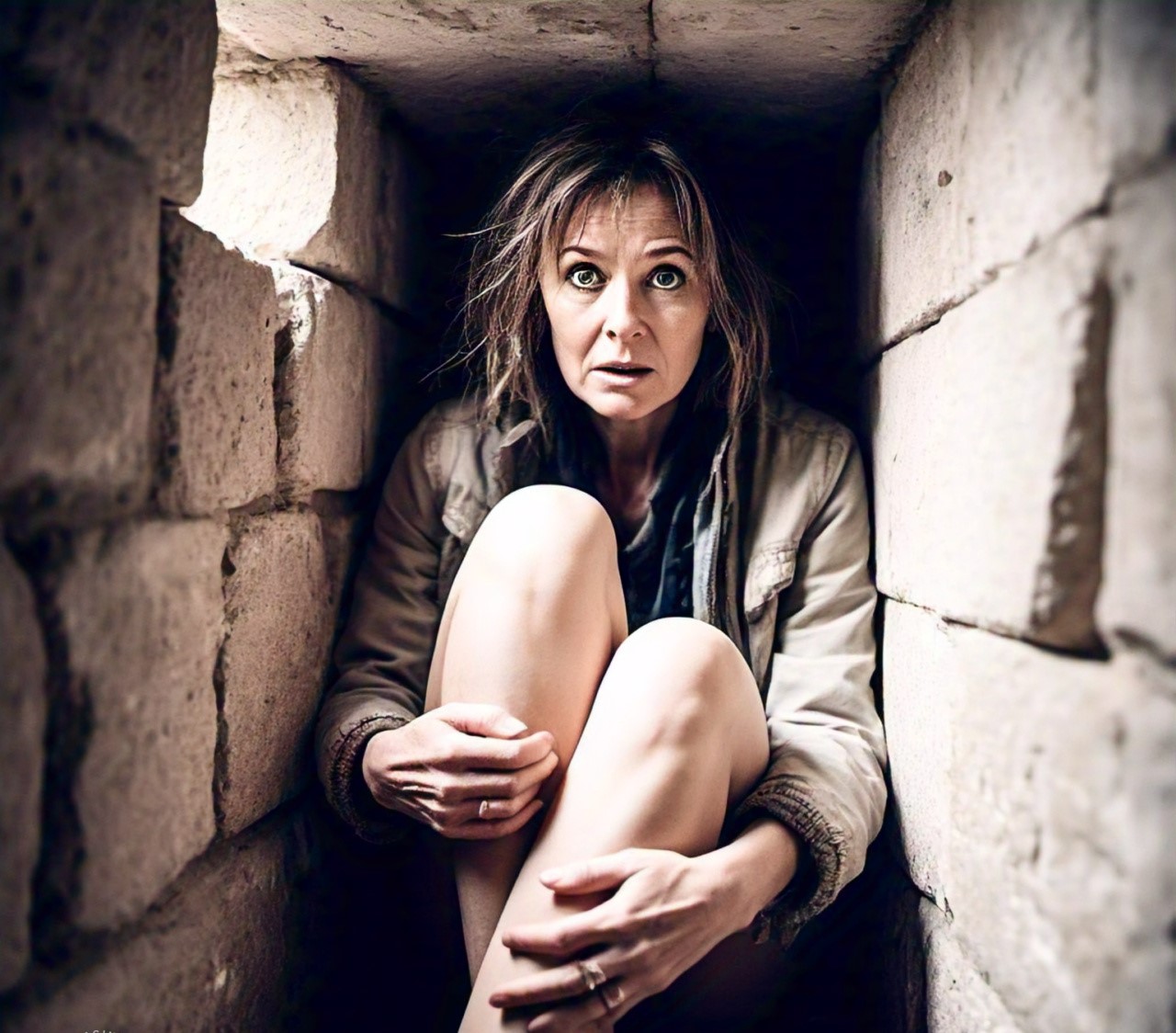Fear is a pervasive feeling, but having a phobia could be an unintentional response to fear, often accompanied by panic, anxiety and dread. Although most people who suffer from anxiety disorders know that their fears are irrational, that doesn’t mean their experience is any less terrifying.
One phobia that is not well-known and is largely overlooked is cleithrophobia, which refers to anxiety about being in a trap. A tiny amount of people could feel the anxiety of feeling trapped, yet it is still a significant factor in the way they live their life.
What Is Cleithrophobia?
Cleithrophobia is a specific type of phobia that is caused by the fear of being trapped. The root word used to describe this fear comes from the Greek clethra, which means to close or shut.
Many situations could cause cleithrophobia, such as being trapped in a bathroom or a smaller space. It can affect children and adults and may result in various distressing and disruptive symptoms.
People who suffer from the fear of being trapped may leave them feeling insecure, but with the correct strategies and treatment, the fear of being trapped can be effectively controlled.
Sadly, cleithrophobia or the fear of being stuck or trapped, can get confused with claustrophobia, which is the fear of tiny spaces.

Claustrophobia Vs. Cleithrophobia
Claustrophobia
Do you have a fear of being enclosed? Claustrophobic people may feel extreme anxiety and panic when thinking about going into the MRI room or other small areas.
Cleithrophobia
However, it could be caused by being trapped in a bind or in a tiny space. If you’re suffering from cleithrophobia, you may be at ease in an enclosed space if you know that there is a way to get out. This fear is centred around being confined and in an impossible position to escape.
Although the distinction between the two is subtle, it’s just as important. Both can trigger anxiety attacks before you’ve even experienced the triggers.
Symptoms of Cleithrophobia
There are a variety of symptoms for people suffering from Cleithrophobia, and they can be classified into three categories which are physical, psychological and behavioural. Suppose you’re familiar with other forms of phobias. In that case, you can see some similarities as phobias share the same symptoms concerning physical and psychological signs because of their relationship to stress, fear, and anxiety.
Common symptoms of Cleithrophobia are:
- Aversion to places or situations where obtaining help or escape is difficult, including areas with a lot of people, bridges, elevators, mines, caves, quarries etc.
- Irrational fear of earthquakes.
- You may experience shortness of breath, a racing heart, or palpitations, usually without apparent reason. The mere thought of feeling stuck or not being able to get out in certain situations could result in chest tightness. It is possible to mistake this as an attack of the heart.
- Anxiety or fear that persists in specific areas, including avoidance of earthquake-prone zones, refraining from travelling in these locations, or avoiding situations involving tight or closed areas.
- This fear can even cause problems in one’s career, relationships or everyday life.
Physical and psychological/emotional symptoms
- A feeling of fainting, dizziness, vertigo or lightheadedness.
- The feeling of choking or tightness in the chest and around the throat
- Heart palpitations, racing heart, and chest tightness
- Flashes of cold or hot
- Vomiting, nausea, gastric disorders and loss of appetite
- Sweaty palms
- Tingling sensations throughout the body
- Be afraid of embarrassing oneself due to complete inability to control.
- A continuous movie-like reel is played in the mind of the person experiencing the phobia, literally having an experience that is out of the body as the thoughts of being trapped or dying beneath the debris replay over and over in his head.
- Diagnosed with multiple diseases could make identifying and dealing with the fear difficult. This could also be the situation when the person suffering from the phobia begins to abuse substances.
An all-out panic attack is not an enjoyable experience. It can be extremely intense. The person suffering from the panic might cry, scream, shiver, and faint. This may make the phobic more stressed and can result in feelings of loss of control. Sometimes, the situation may get out of hand, resulting in an endless cycle of anxiety from losing control to panic attacks, anxiety to losing control, and so on.
Diagnosis of Cleithrophobia
A physician or mental health specialist will ask you questions about your symptoms to establish the diagnosis. They might also ask for a medical history and conduct lab tests and a physical examination to rule out any other ailments.
Cleithrophobia is not listed as a distinct disorder within the Diagnostic and Statistical Manual of Mental Disorders. Instead, it is classified as a kind of phobia. To be classified as a specific phobia:
- The fear can cause significant distress or disrupt the life of a person.
- The fear has to be exaggerated in comparison to the actual risk.
- The person avoids the source of the fear or endures it only with extreme distress.
The symptoms have to be present for a minimum of six months, and a health issue, mental health or medical issue cannot cause them.
Causes of Cleithrophobia
There is never a single cause for a psychological disorder. Instead, various factors can play a part or increase the chance of developing one. Phobias usually have three primary reasons: biological factors, environmental factors, as well as psychological causes.
Biological Factors
One of the risk factors for Cleithrophobia is the genetics passed on through family members. Although there isn’t a single gene or a group of genes linked to phobias, There are genes linked to anxiety. So, having an anxiety-related family history could indicate that the individual might also carry genes related to anxiety, making the person more susceptible to developing anxious disorders, thereby increasing the likelihood of developing a phobia such as Cleithrophobia.
Environmental Factors
Genetics is not the only thing that can be a factor and adversity, but personal experiences are also viewed as a factor that could contribute to the formation of Cleithrophobia. Apart from the genes, parents who exhibit anxious behaviours might not only transmit anxiety and stress but may also encourage the children they raise to follow in their footsteps and adopt the same behaviours.
Another typical environmental trigger is the personal experience of being a prisoner in a place. As you can imagine, being trapped in an area is a terrifying experience that will affect an individual throughout their life.
Psychological Factors
In addition, issues related to psychological problems can cause someone to develop Cleithrophobia. In particular, other mental issues can trigger this anxiety, such as anxiety disorders that are clinically diagnosed. An anxiety disorder may make someone extremely nervous and dependent on the person being overly concerned about a particular situation, like being in a space or something similar that could result in a simple fall.
The psychological disorder called Post-Traumatic Stress Disorder (PTSD) could also play a role in the development of Cleithrophobia. If you’re unfamiliar with PTSD, the disorder is classified as a stress disorder triggered by the aftermath of a very stressful experience that is traumatic, that the person is still impacted by. It is easy to imagine that experiencing a situation where you are in a place without a way out isn’t a pleasant or pleasurable experience. This is an apparent reason why someone might develop an extreme fear and an aversion to situations like this.
Treatment for Cleithrophobia
The best thing about most fears is that they are treatable if you take the proper method. In most cases, a comprehensive treatment plan can help. Here are a few steps the phobic, as well as his family members, can follow to help them get better and avoid anxiety attacks:
Medication
The doctor you see may prescribe anti-anxiety medicines to help you deal with anxieties.
Psychotherapy
This treatment of phobias typically involves using cognitive-behavioural therapies (CBT) and other similar approaches, such as exposure therapy and systematic desensitization. These techniques help to alter those negative beliefs that lead to anxiety. They also help you get used to the root of your fear to decrease its intensity.
If you are experiencing serious or life-threatening symptoms, it’s recommended to seek help from an experienced mental health expert. Systematic desensitization, as well as other cognitive-behavioural methods, are very effective in treating fears but should only be used with the guidance of a qualified professional.
Read More: Cheap Dopamine Stops You From Becoming High Value
Read More: Improve Your Willpower | The psychological science of self-control
Read More: Overjustification Effect: How to Fix a Lack of Motivation
Coping With Cleithrophobia
For those suffering from Cleithrophobia, conquering the fear might appear to be a daunting task, it’s not! There are many ways to manage and conquer phobias like the ones listed below:
- Maintain a journal every day. Note down any thoughts that come to mind in the face of certain circumstances.
- Visualize a positive scenario. This can help to de-sensitize your mind to the event or subject of anxiety. Positive visualization helps to reduce the reaction of fear and anxiety.
- Family members at home can assist in maintaining an atmosphere of peace and allow the phobic to express his emotions and feelings without fear of being made fun of. Psychologists or talk therapists may also assist the phobic in communicating his thoughts if he is uncomfortable talking to his family or friends.
- In the case of severe anxiety, medication can be prescribed. However, it should be considered only a last resort because most medicines come with some adverse effects.
- Yoga, relaxation techniques, guided meditation, stretching, deep breathing and physical exercises can be utilized in conjunction with traditional therapies.
- Making an escape route in advance.
- Keeping the door of the room slightly open.
- Locks might be removed from doors to the home (in rooms that you could be afraid of being locked).
But, these methods are only temporary and not a good idea in public areas. If you are in a public place feeling anxious and stressed, you could perform breathing exercises that are conscious and visualization techniques or even share your thoughts with family members, friends or a help system to calm you down.
If you find yourself in situations where the fear of being trapped can cause you to feel anxious and nervous, you could attempt using the stop! Technique. It is a form of cognitive behavioural therapy (CBT) practice that can assist with your racing thoughts and over-worrying calm. If you feel anxious, you can shout “STOP”. Try shouting it loudly initially, but gradually you can change to whispering, and then eventually, you can do it silently.
Conclusion
If you need help, seek it out when this fear affects the quality of your life and relationships or your capacity to enjoy social events. While cleithrophobia can be a nuisance but it usually responds to various treatments. With hard work, it is possible to eliminate the fear and enjoy many more activities you want without restriction.



